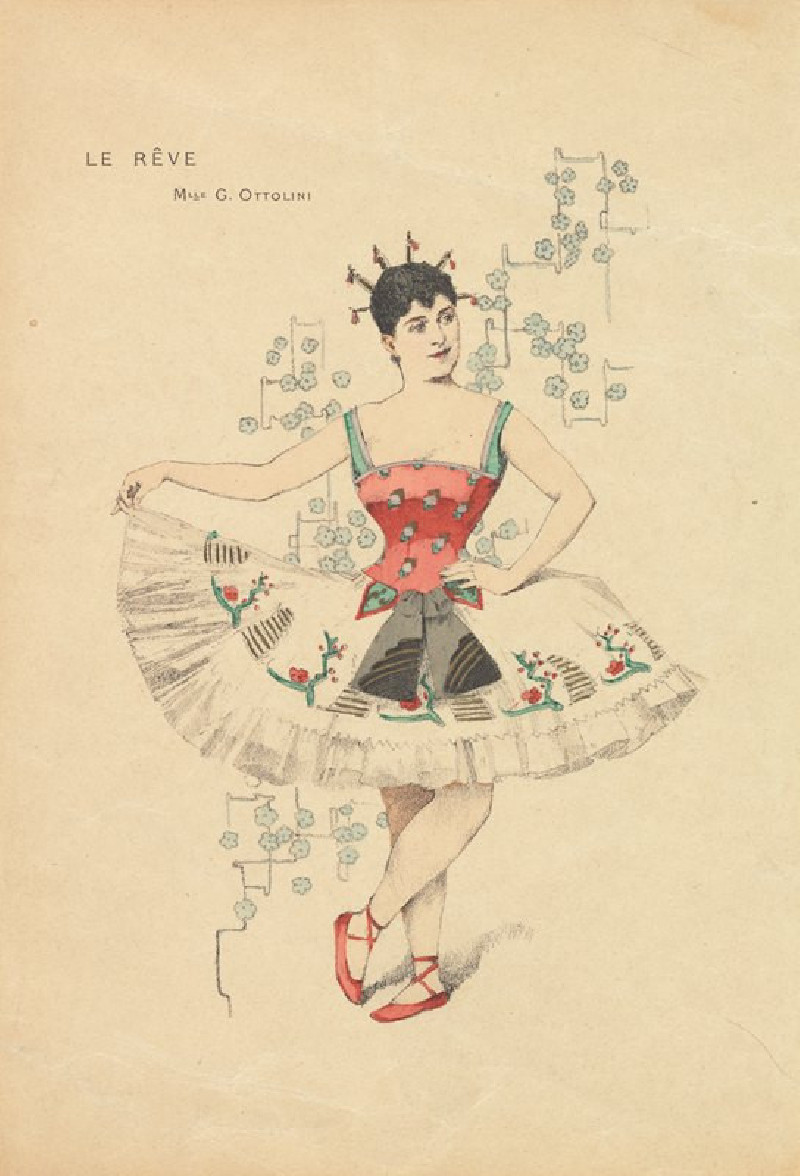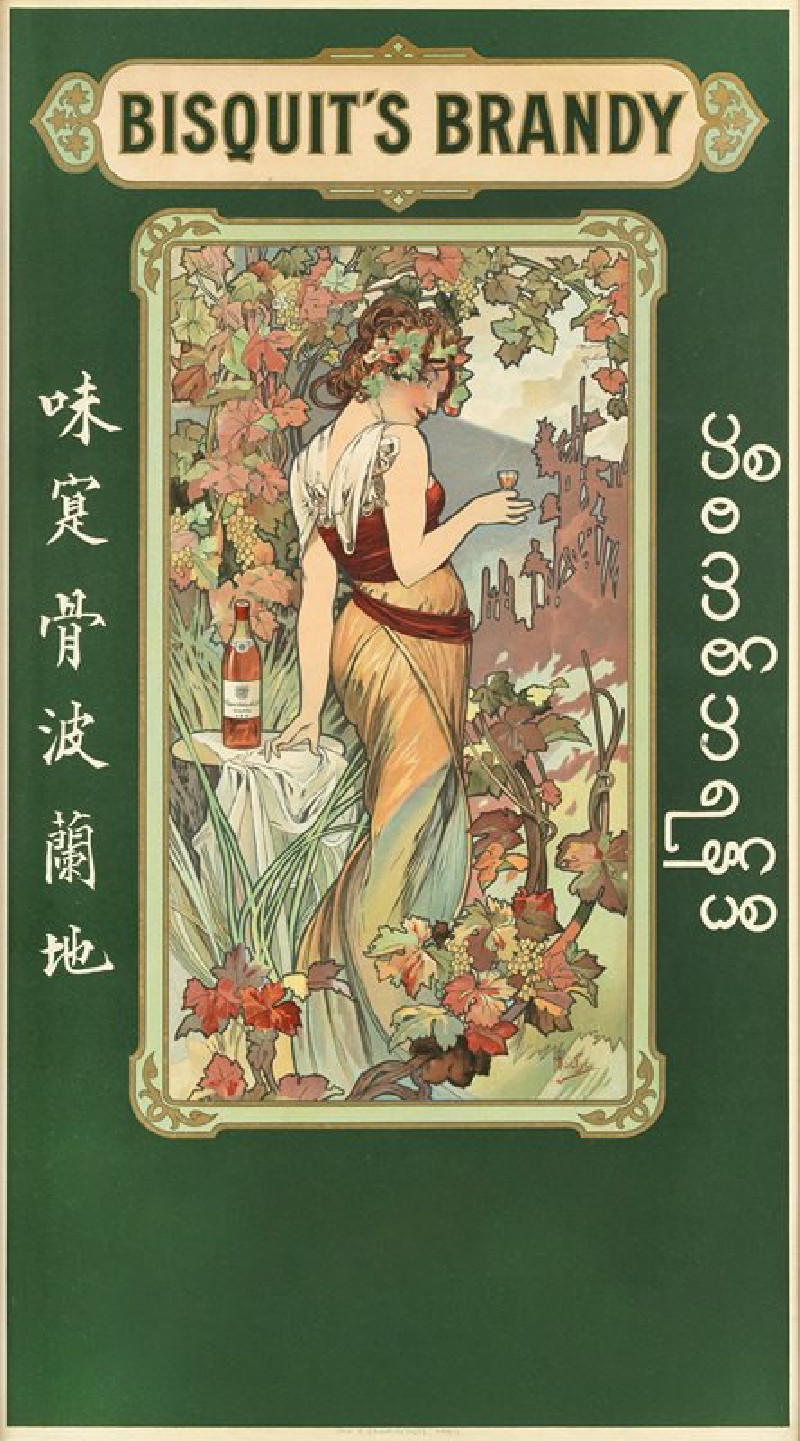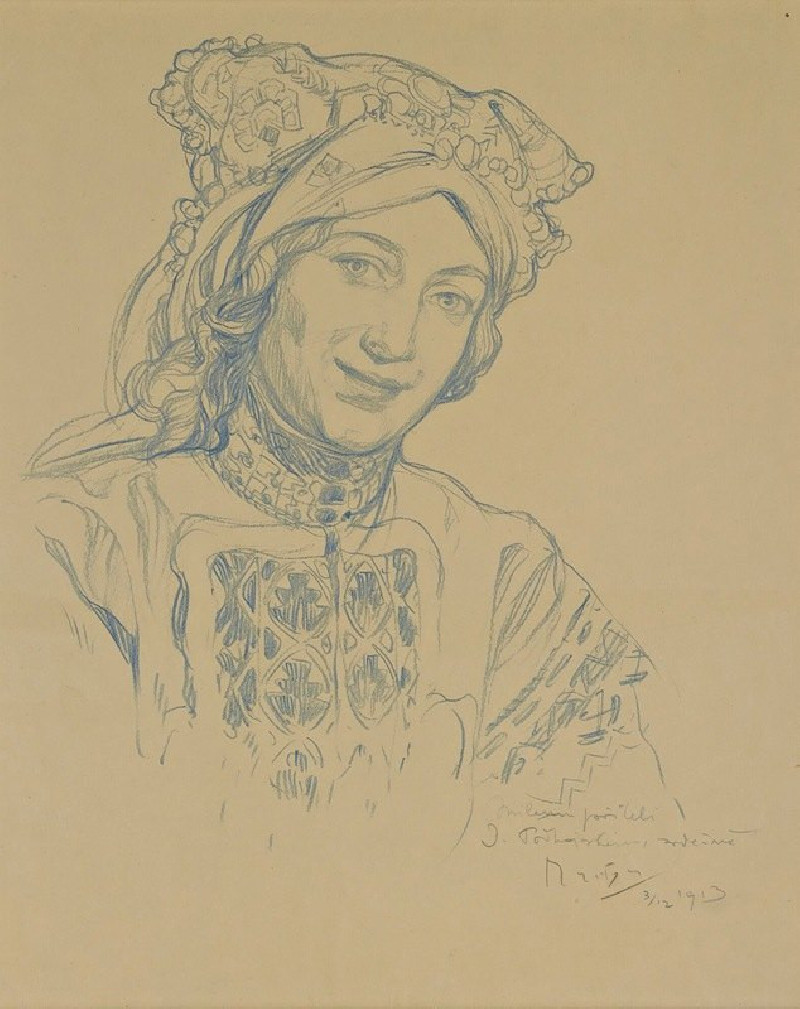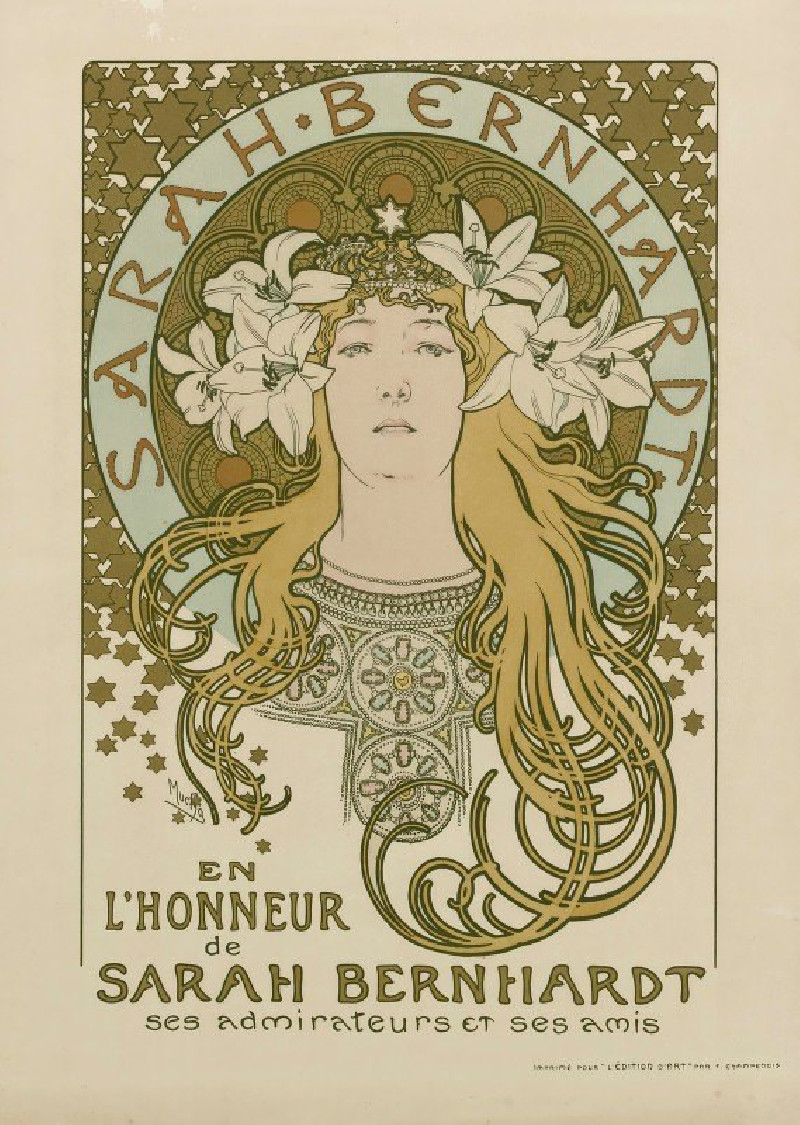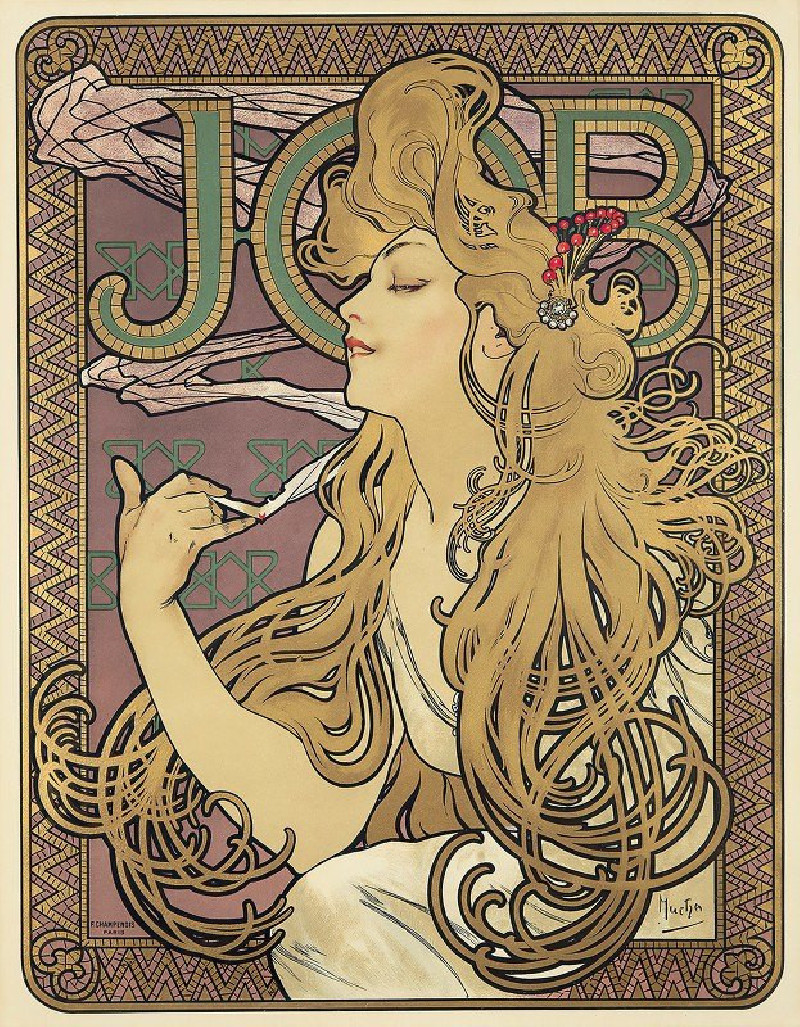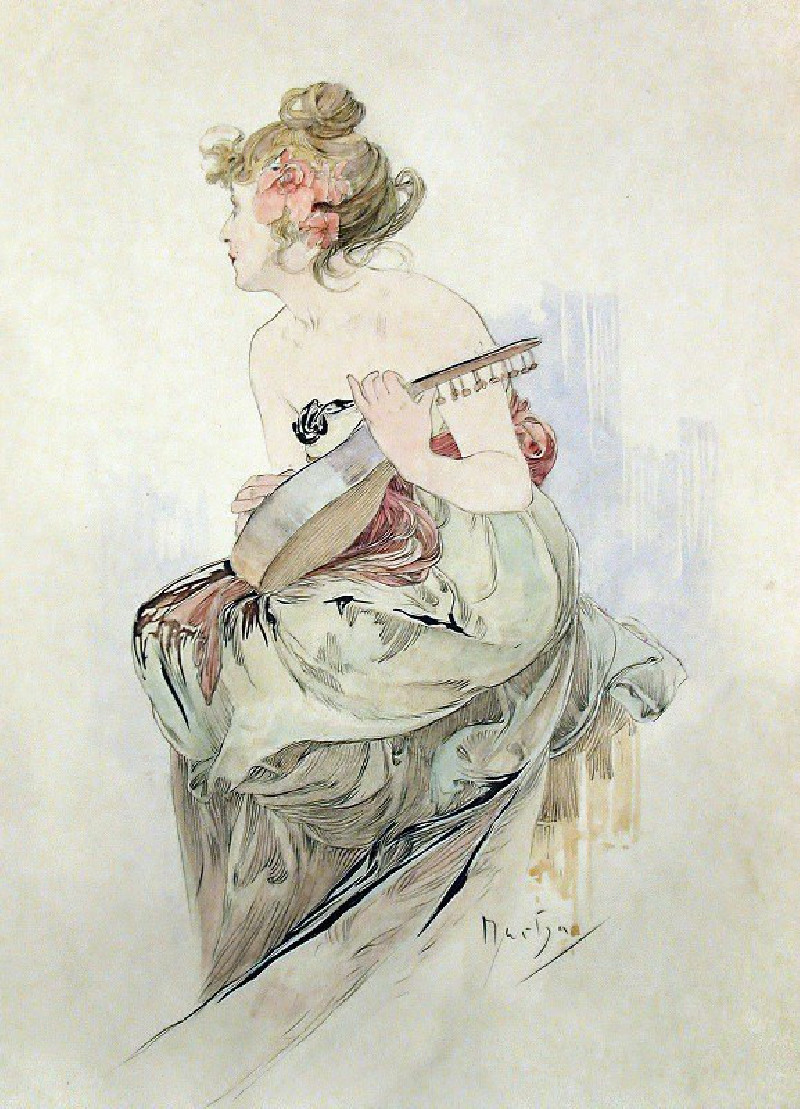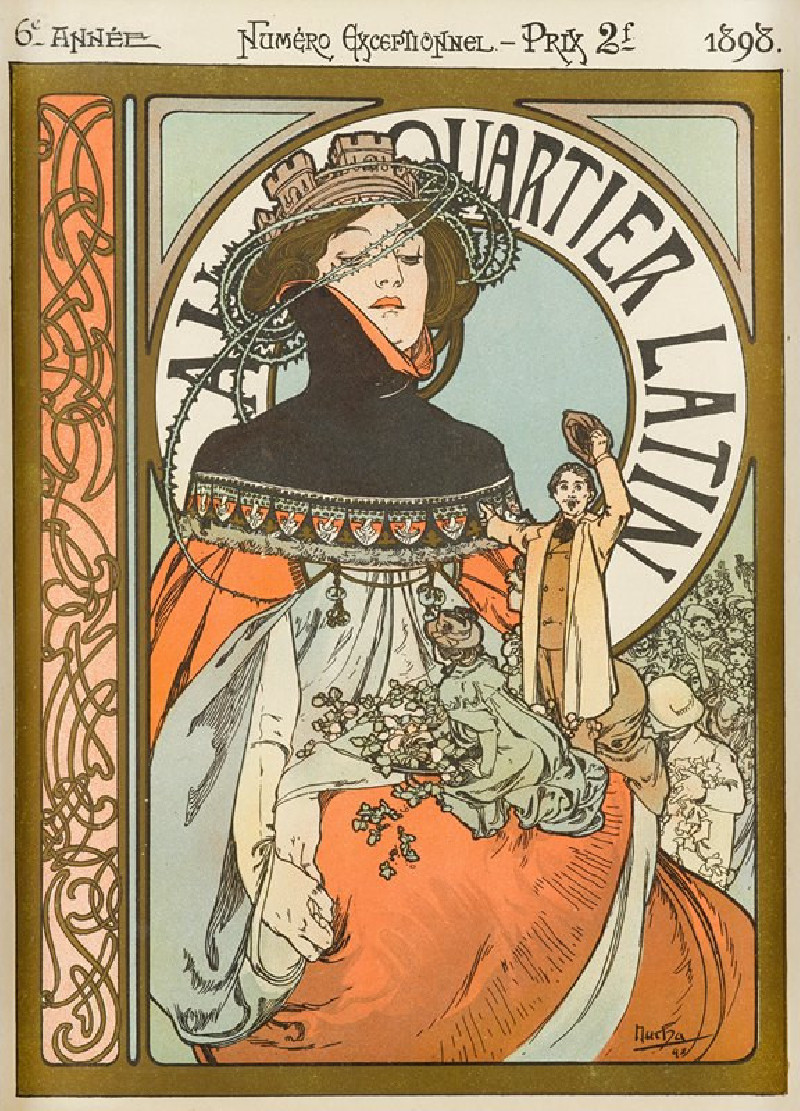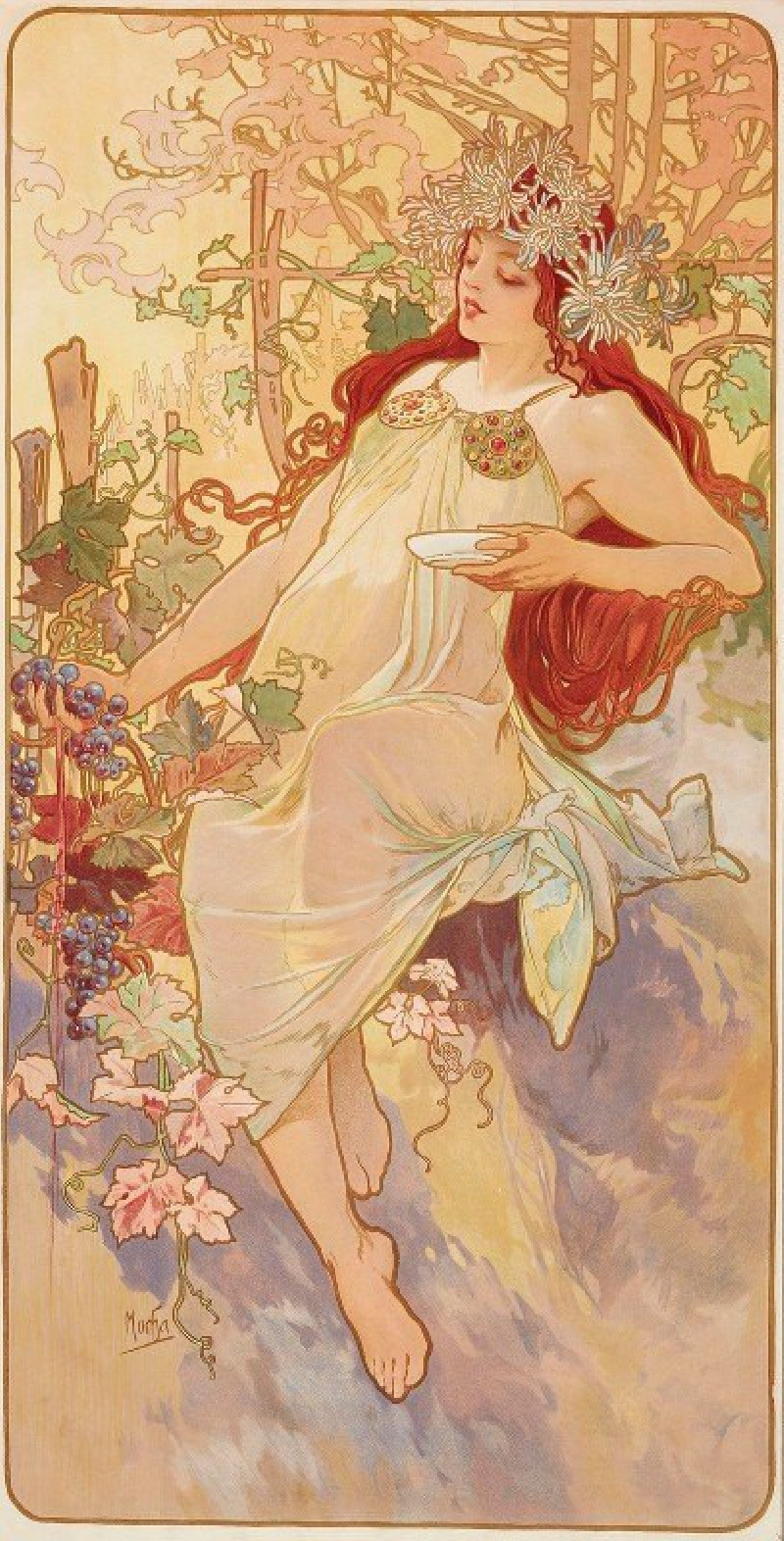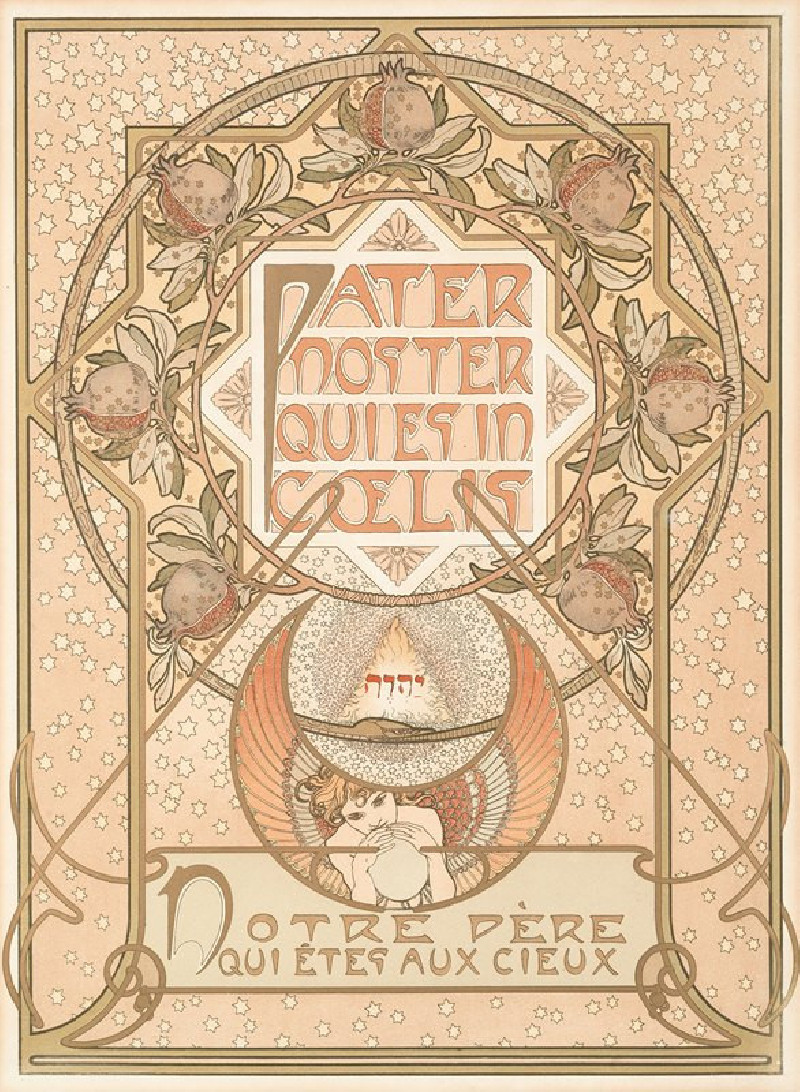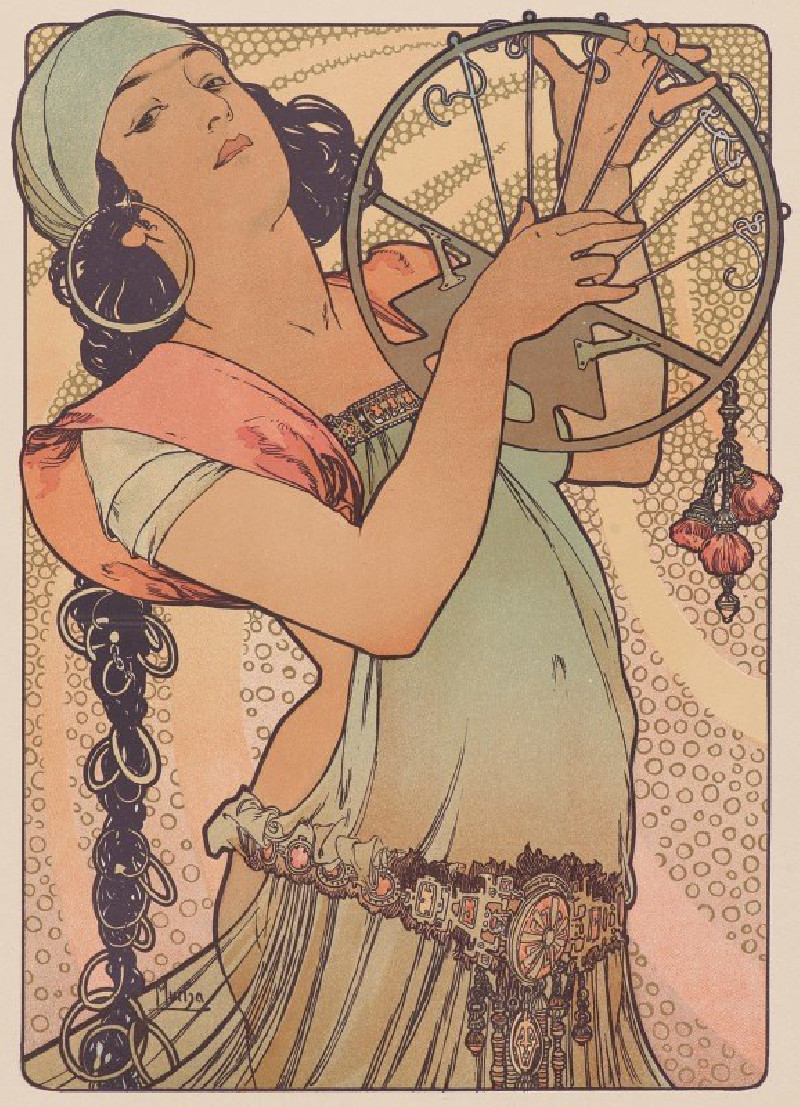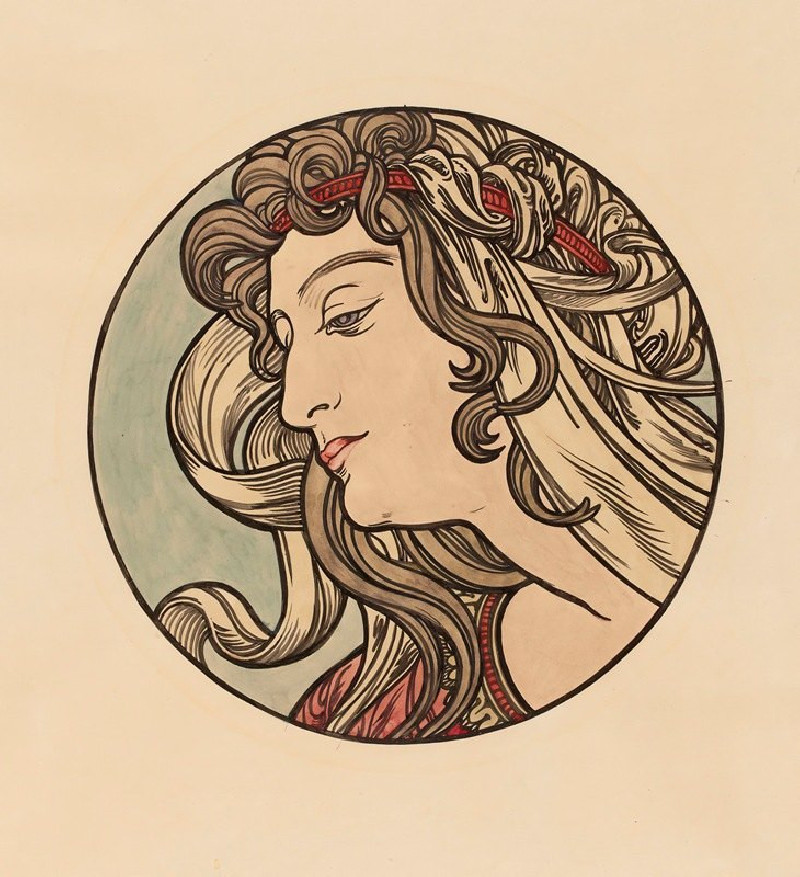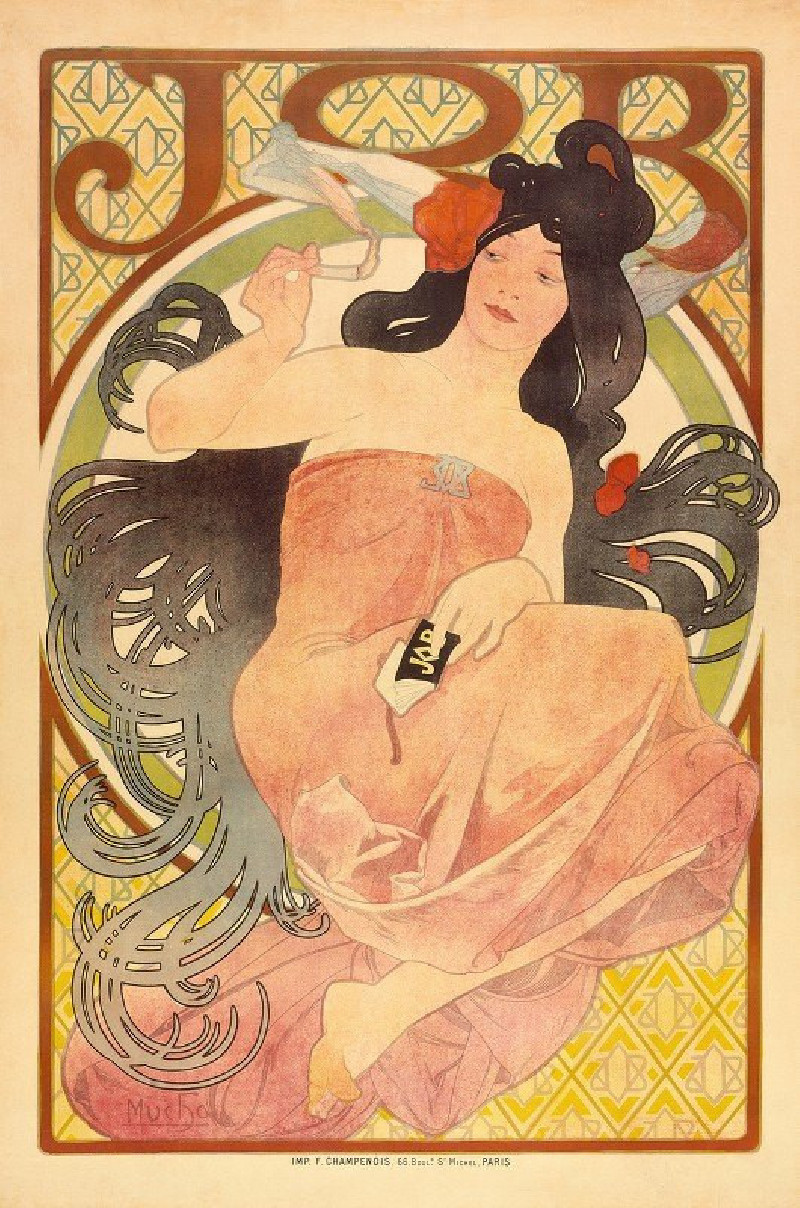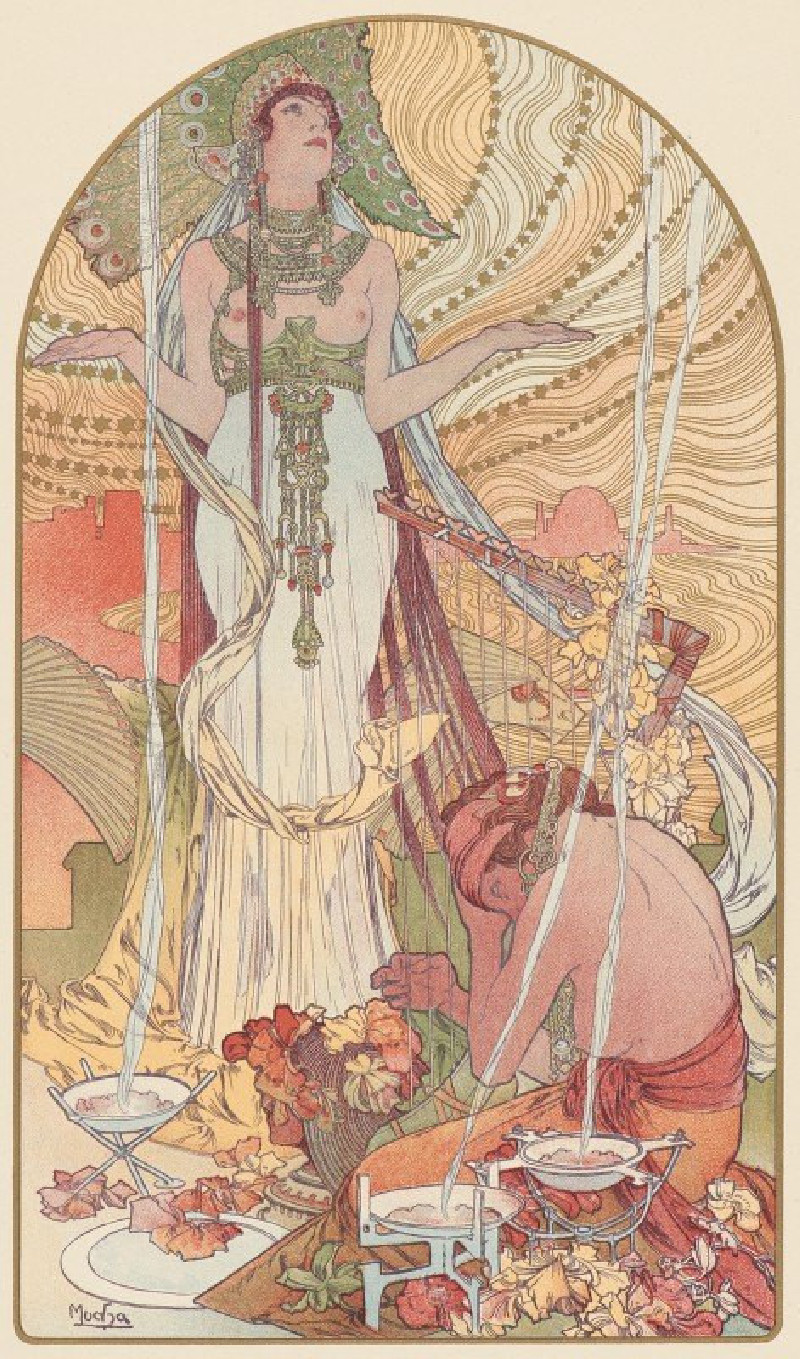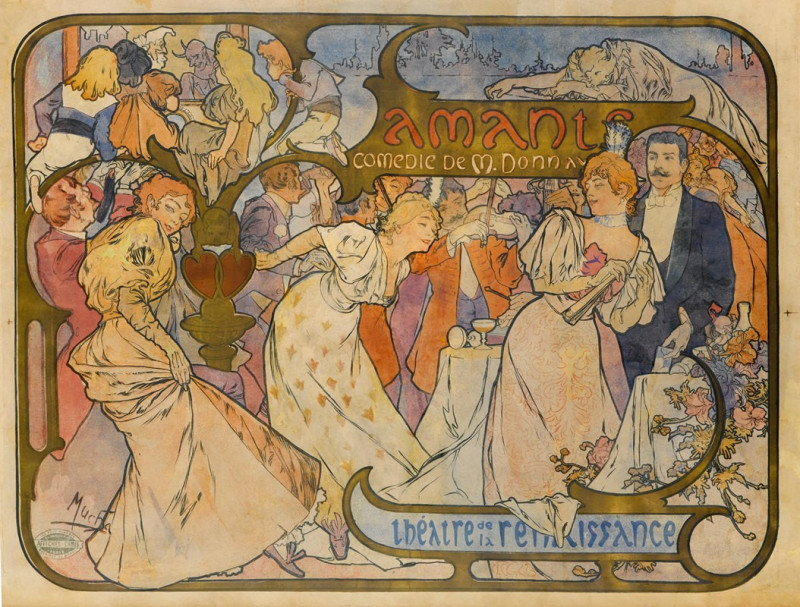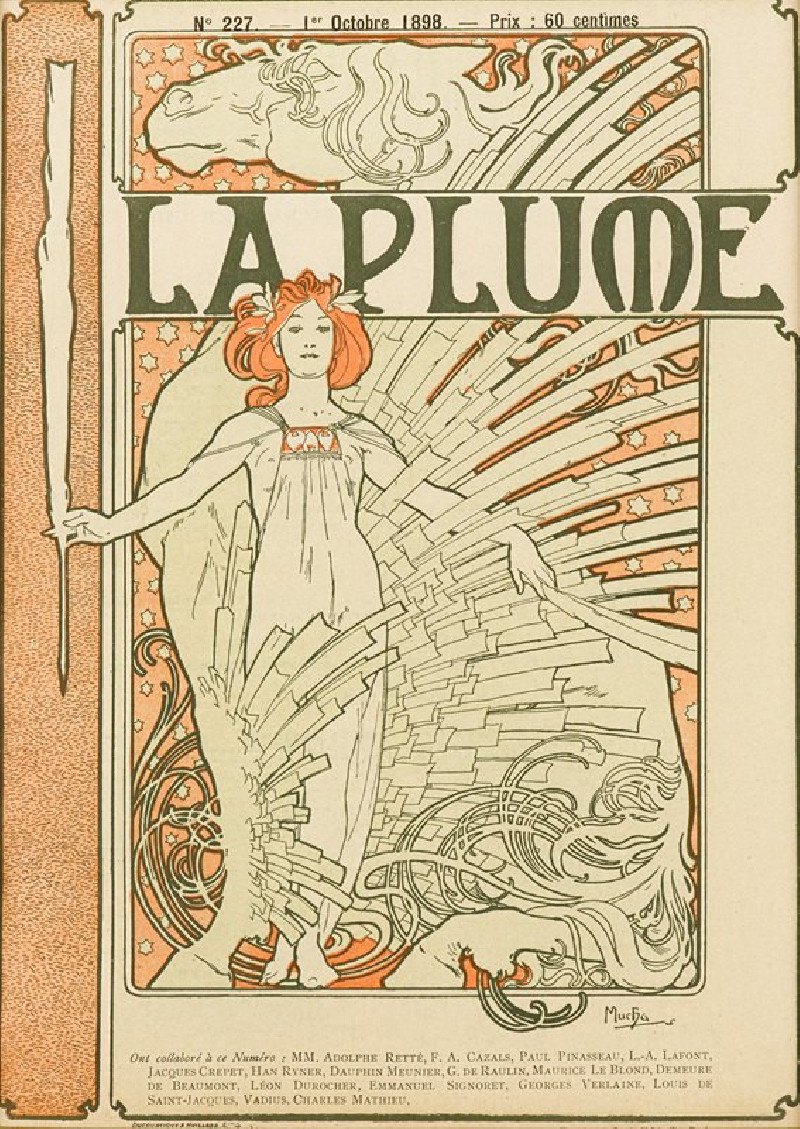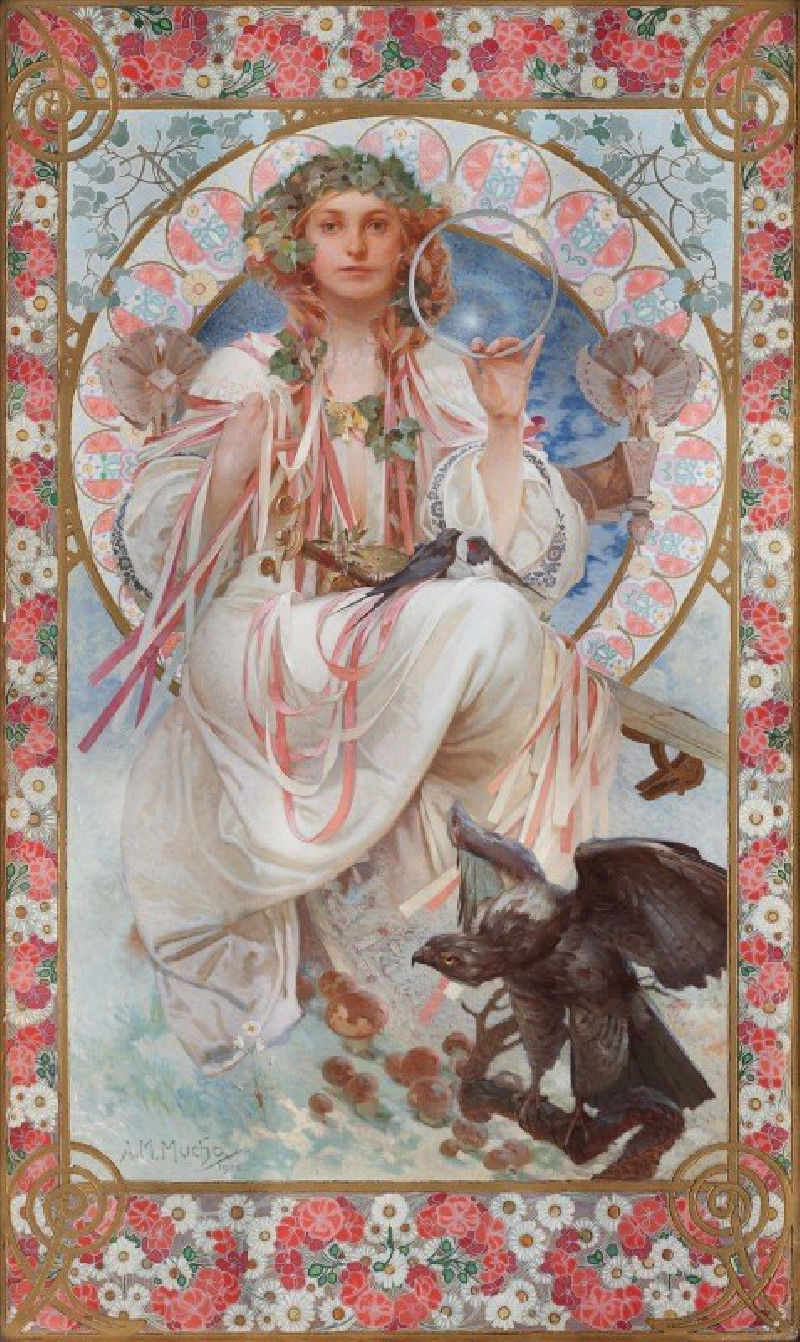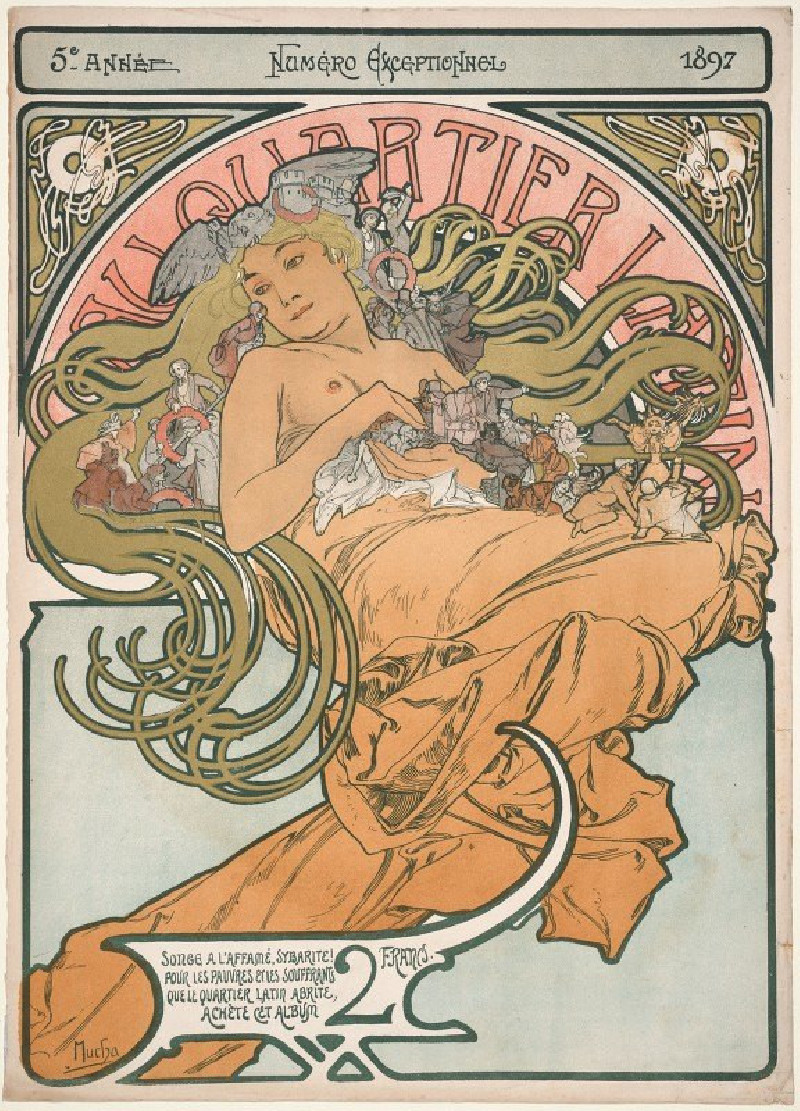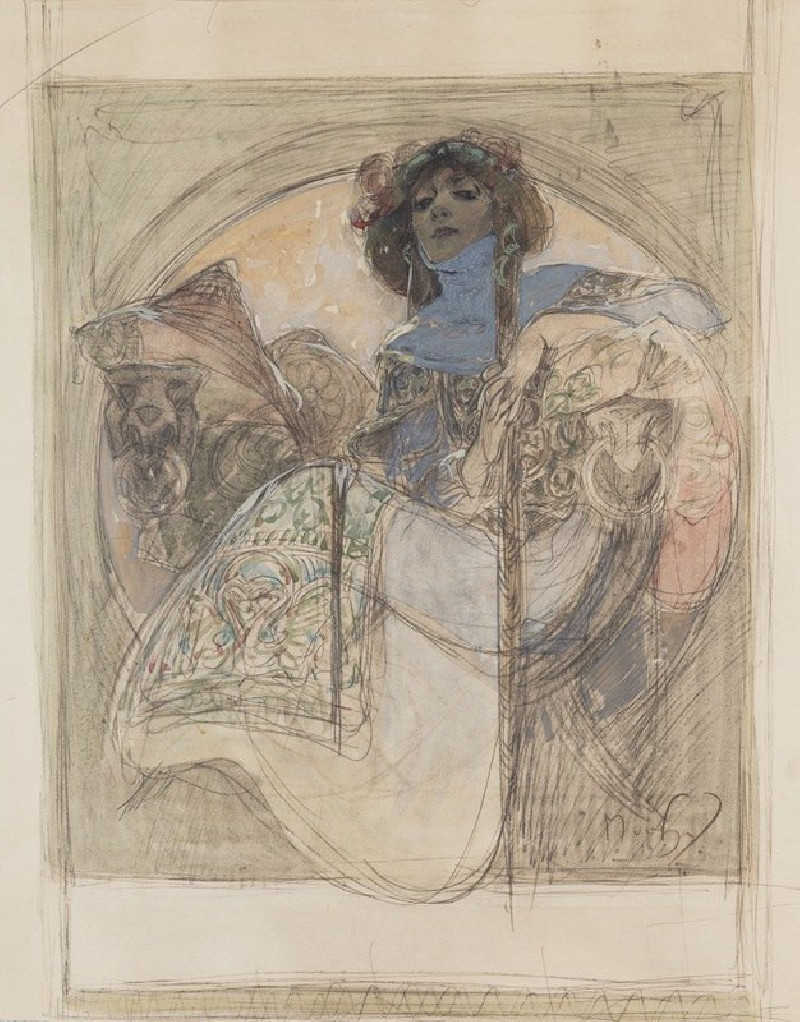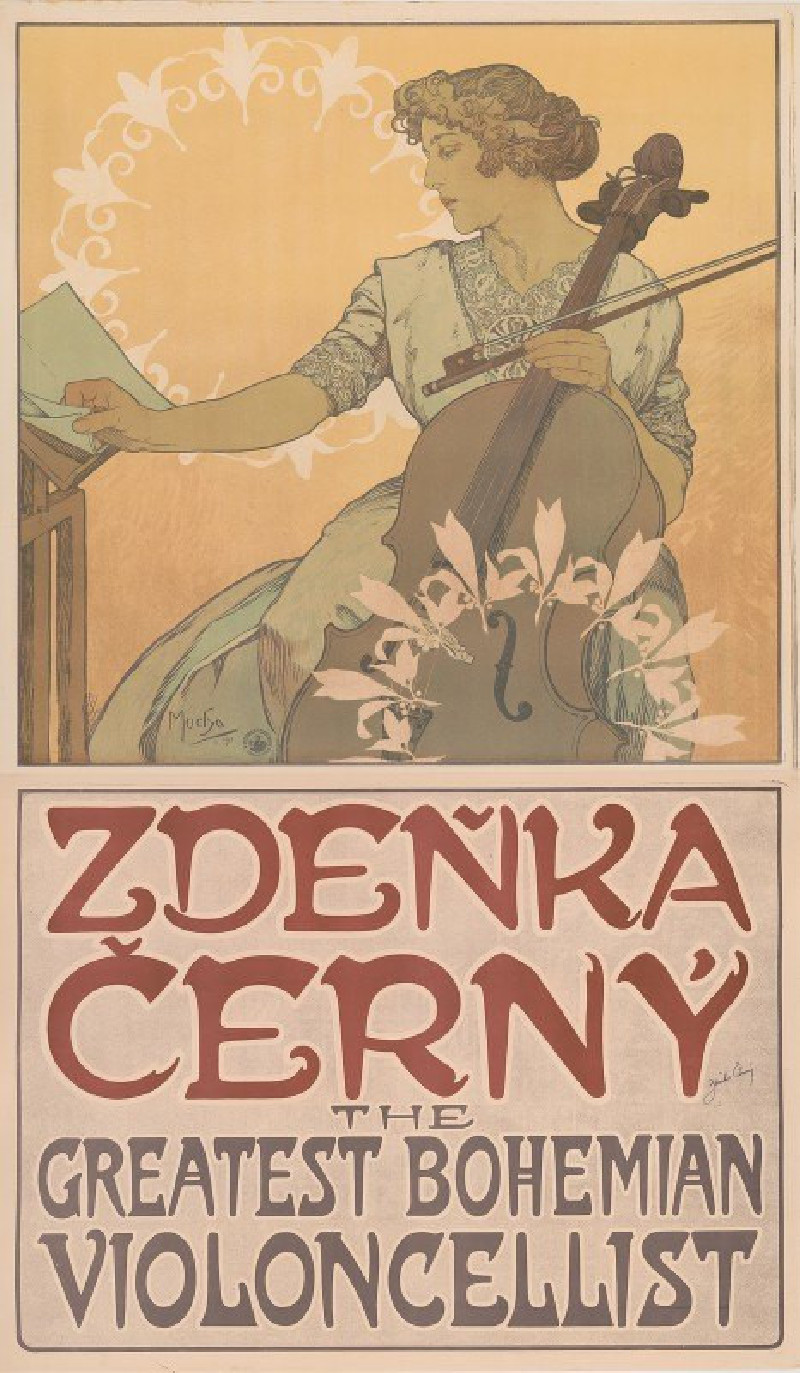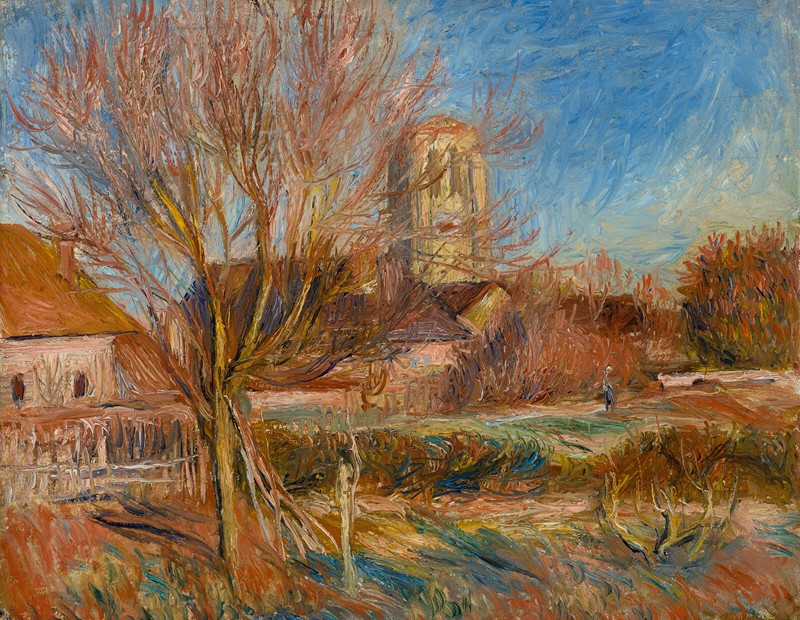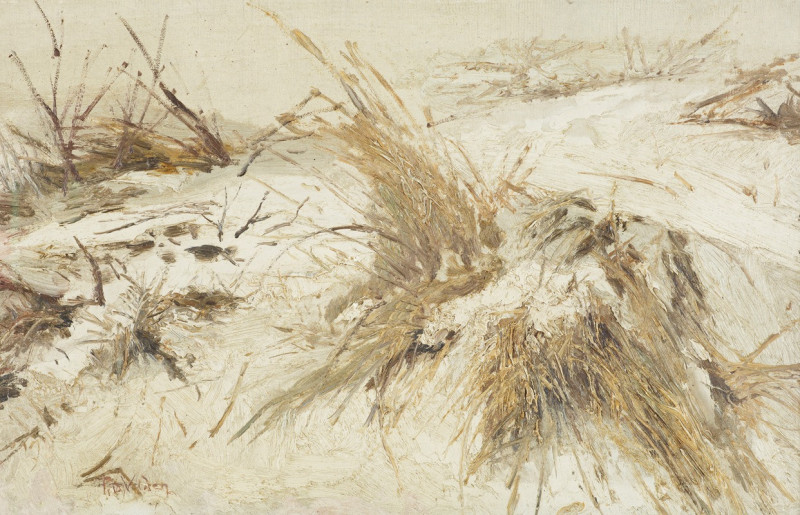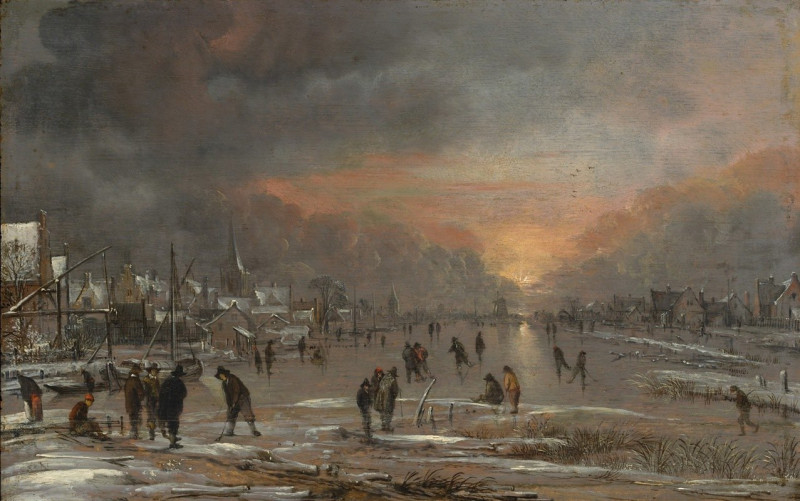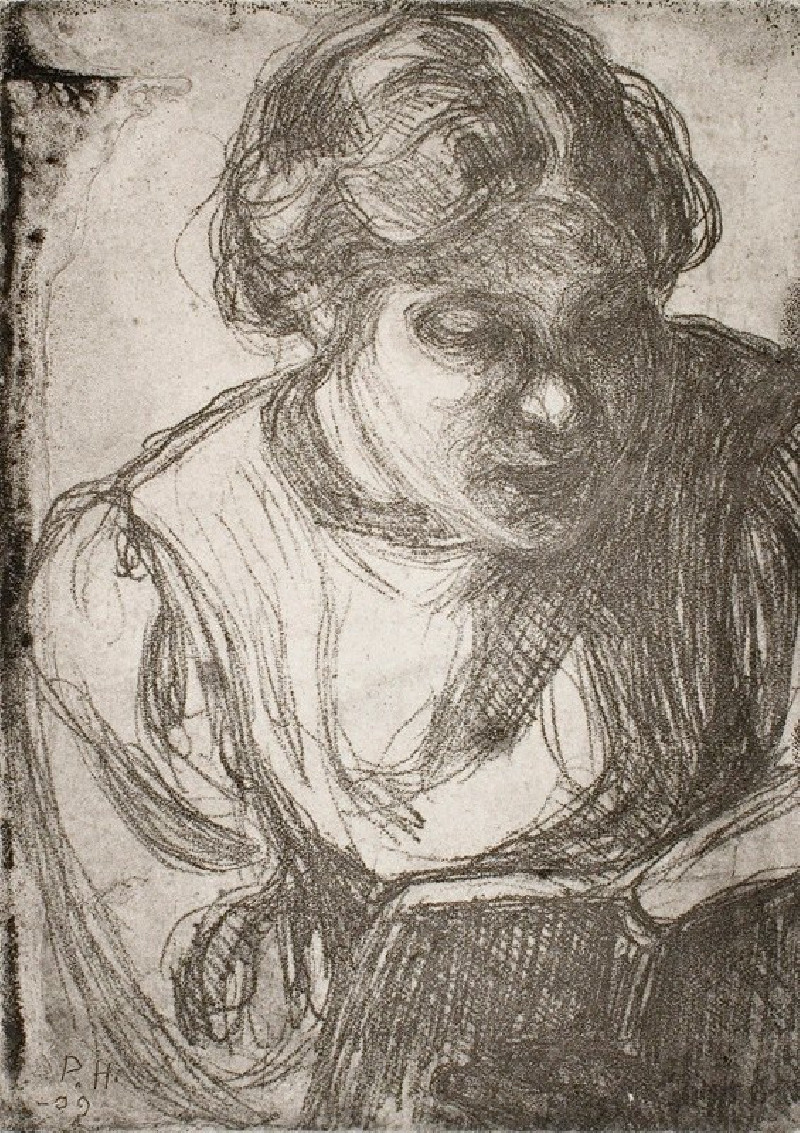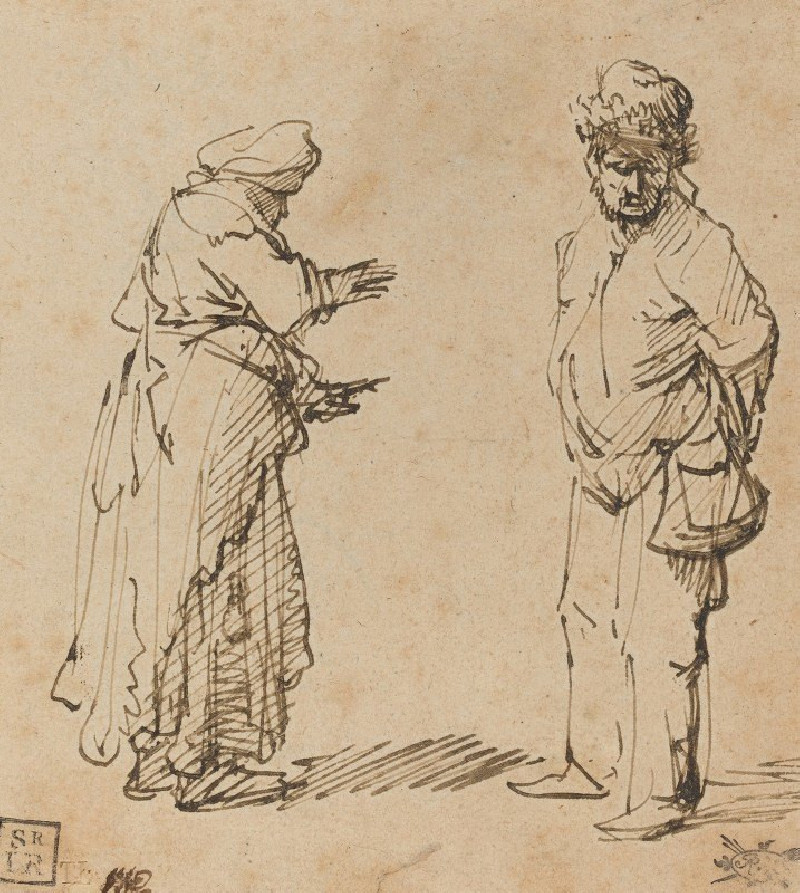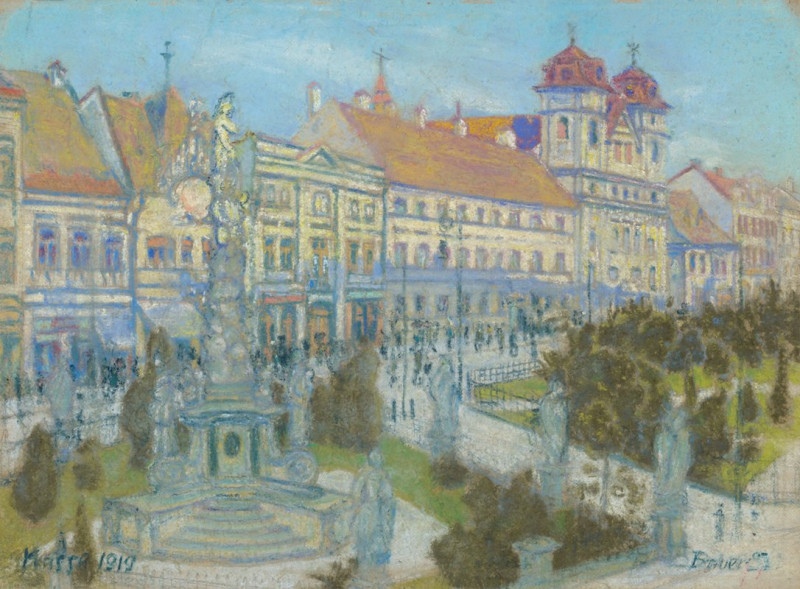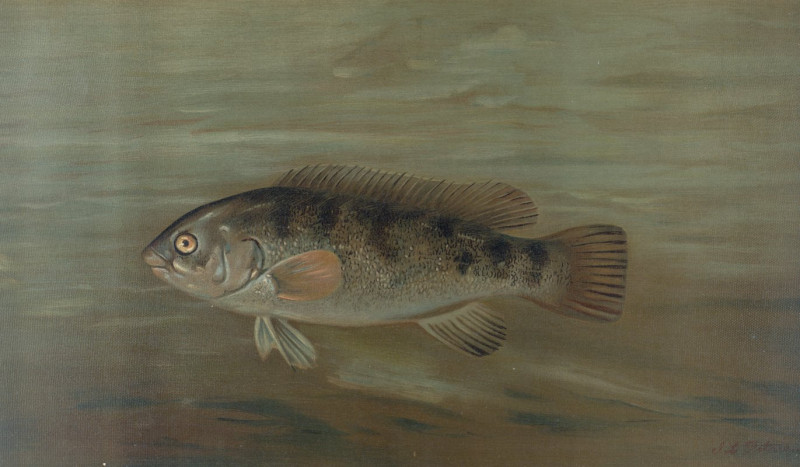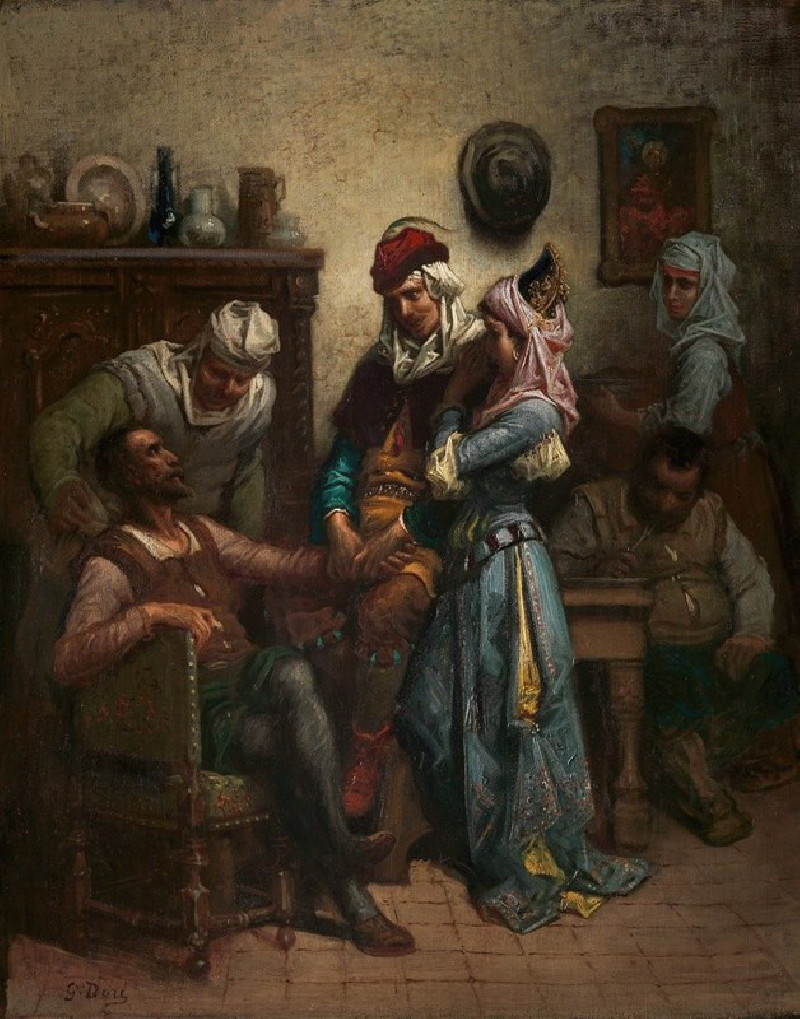Le rêve (1890)
Technique: Giclée quality print
Recommended by our customers
More about this artwork
"Le rêve" (1890) by Alphonse Mucha is a captivating work that depicts a poised and elegant female figure, rendered with a distinctively delicate illustrative style. In this artwork, the woman stands gracefully, her body slightly turned, while holding out the skirt of her elaborate and decorative tutu. The tutu is richly adorned with floral motifs that add an organic and lively character to her attire.Her costume is vibrant, featuring a bold red bodice dotted with stylized heart shapes and a white skirt detailed with floral embroidery, connected by green straps that cross her chest. The colors are vivid and create a stark contrast against the light background, drawing the viewer's attention to the figure. Her footwear consists of red ballet shoes, enhancing the theatrical and performance-inspired theme of the painting.The woman's facial expression is serene yet attentive, capturing a sense of contemplation or introspection. This, along with her attire and posture, suggests she may be a performer or a dancer. Her head is adorned with a small, regal tiara or crown, adding a touch of elegance and suggesting her status or role in a performance context.In the background, there is an array of abstract shapes or perhaps symbolic elements that resemble fragmented pieces of dreams or thoughts, adding a layer of mystery and depth to the piece.
Delivery
Returns
Alphonse Maria Mucha also know internationally as Alphonse Mucha (1860-1939), was a Czech graphic artist, painter and illustrator. He lived in Paris during the Art Nouveau period, and is best know for his noticeably stylized and decorative theatrical posters like those of Sarah Bernhardt, the most famous actress in paris at the time. Mucha produced paintings, advertisements, book illustrations as well as designs for carpets, jewelry and theatre sets, in what was called the Mucha style. His works featured beautiful young women in neoclassical robes surrounded by flowers which formed as haloes.

